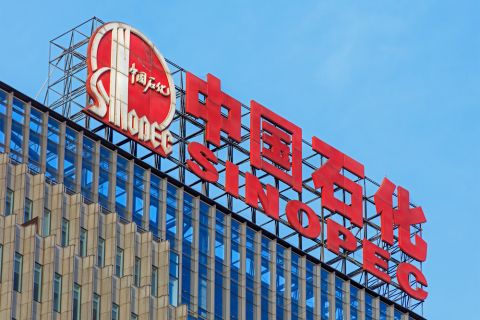Williams Cos. Inc. recently signed a memorandum of understanding (MOU) with Denmark’s Ørsted AS to explore the potential for jointly developed clean energy projects in the U.S.
Through the MOU, the two companies aim to identify ways to leverage Ørsted’s renewables and hydrogen expertise with Williams’ natural gas infrastructure and processing experience to co-develop hydrogen or synthetic natural gas facilities powered by renewable energy, according to a company release on Sept. 22.
“Natural gas and our large-scale energy infrastructure network are ideal partners for facilitating the integration of renewables into the energy mix, while helping our customers move toward a low-carbon future,” Chad Zamarin, senior vice president for corporate strategic development at Williams, commented in the release.
“It’s through technology innovation and collaboration with forward-thinking companies such as Ørsted that we can leverage our assets and expertise to develop solutions to advance the clean energy economy,” Zamarin continued.
The agreement could also include a large-scale wind energy, electrolysis and synthetic gas-via-methanation co-development in western Wyoming where Williams owns significant land area and natural gas infrastructure.
Based in Tulsa, Okla., Williams’ energy infrastructure network handles 30% of the natural gas used for power generation, heating, and industrial use in the U.S. and is adaptable to future renewable energy storage and transport, according to the release.
“We’re excited to partner with Williams to deliver clean fuels in the U.S. and transform our onshore business into a potential growth platform for renewable hydrogen,” Vishal Kapadia, senior vice president and chief commercial officer of Ørsted Onshore, said in the release.
Ørsted’s journey in the U.S. started in 2015, and the company now owns and operates the Block Island Wind Farm—America’s first offshore wind farm.
Since then, Ørsted expanded its renewable energy portfolio with onshore wind, offshore wind, solar and storage in operation or construction across the Texas, Midwest and East Coast markets. The company is also currently building two huge solar arrays in Texas and Alabama, totaling nearly 700 megawatts.
“Combining our renewable development and operations expertise with access to large-scale gas transportation networks and infrastructure will further expand the scope of energy solutions we can deliver and positions us well to continue to develop innovative approaches to drive the decarbonization of the energy system,” Kapadia added.
Recommended Reading
Halliburton’s Low-key M&A Strategy Remains Unchanged
2024-04-23 - Halliburton CEO Jeff Miller says expected organic growth generates more shareholder value than following consolidation trends, such as chief rival SLB’s plans to buy ChampionX.
CEO: Continental Adds Midland Basin Acreage, Explores Woodford, Barnett
2024-04-11 - Continental Resources is adding leases in Midland and Ector counties, Texas, as the private E&P hunts for drilling locations to explore. Continental is also testing deeper Barnett and Woodford intervals across its Permian footprint, CEO Doug Lawler said in an exclusive interview.
Deepwater Roundup 2024: Americas
2024-04-23 - The final part of Hart Energy E&P’s Deepwater Roundup focuses on projects coming online in the Americas from 2023 until the end of the decade.
US Drillers Cut Oil, Gas Rigs for Second Time in Three Weeks
2024-02-16 - Baker Hughes said U.S. oil rigs fell two to 497 this week, while gas rigs were unchanged at 121.
Sinopec Brings West Sichuan Gas Field Onstream
2024-03-14 - The 100 Bcm sour gas onshore field, West Sichuan Gas Field, is expected to produce 2 Bcm per year.




